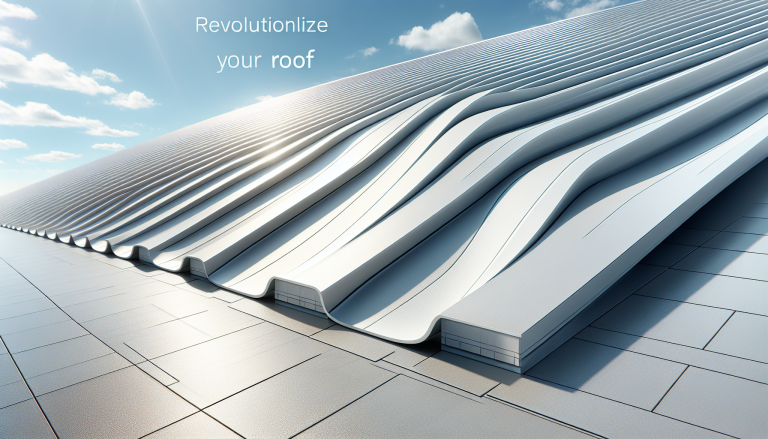Elastomeric Roof Coatings: A Comprehensive Guide to Sustainable Roofing Solutions
In the dynamic world of commercial roofing, elastomeric roof coatings have emerged as a game-changing technology that offers property owners unprecedented protection, energy efficiency, and cost-effectiveness. This comprehensive guide will explore the intricate world of elastomeric roof coatings, providing insights that can transform your approach to roof maintenance and protection.
Understanding Elastomeric Roof Coatings
Elastomeric roof coatings are specialized liquid-applied membranes that create a seamless, waterproof barrier over existing roofing surfaces. Unlike traditional roofing materials, these innovative coatings can stretch and recover, adapting to temperature changes and structural movements without compromising their protective qualities.
“An elastomeric roof coating is like a second skin for your building – flexible, resilient, and incredibly protective,” notes industry veteran Mark Thompson.
Key Characteristics of Elastomeric Roof Coatings
The unique properties of elastomeric roof coatings set them apart from conventional roofing solutions:
1. Exceptional Elasticity
– Can stretch up to 600% of their original dimensions
– Accommodate building movements without cracking
– Maintain structural integrity under various environmental conditions
2. Superior Water Resistance
– Create a seamless, monolithic membrane
– Prevent water infiltration
– Reduce potential for leaks and moisture-related damage
3. Thermal Performance
– Reflective surfaces minimize heat absorption
– Reduce cooling costs by up to 30%
– Contribute to improved energy efficiency
Types of Elastomeric Roof Coatings

Different formulations cater to specific roofing requirements:
1. Acrylic Elastomeric Coatings
– Water-based solutions
– Excellent UV resistance
– Cost-effective option for moderate climates
2. Silicone Elastomeric Coatings
– Superior water resistance
– Ideal for high-moisture environments
– Excellent long-term durability
3. Polyurethane Elastomeric Coatings
– Enhanced chemical resistance
– Strong adhesion properties
– Suitable for industrial applications
Application Techniques
Proper application is crucial for maximizing the performance of elastomeric roof coatings:
1. Surface Preparation
– Thorough cleaning
– Repairing existing roof damage
– Removing debris and contaminants
2. Professional Application Methods
– Roller application
– Spray techniques
– Specialized equipment for uniform coverage
3. Recommended Thickness
– Typically 20-40 mils
– Ensures optimal protection and performance
Environmental and Economic Benefits
Elastomeric roof coatings offer significant advantages beyond traditional roofing solutions:
1. Sustainability
– Reduce landfill waste
– Extended roof life
– Minimize replacement frequency
2. Energy Efficiency
– Reflective properties lower building temperatures
– Reduce air conditioning requirements
– Potential LEED certification credits
3. Cost-Effectiveness
– Lower installation costs compared to roof replacement
– Reduced maintenance expenses
– Potential insurance premium reductions
Maintenance Considerations
Regular maintenance ensures long-term performance:
1. Periodic Inspections
– Annual professional assessments
– Early detection of potential issues
– Proactive maintenance strategies
2. Cleaning Recommendations
– Gentle pressure washing
– Removing accumulated debris
– Maintaining reflective properties
3. Recoating Intervals
– Typically every 10-15 years
– Depends on environmental conditions
– Professional evaluation recommended
Industry Trends and Future Outlook
The elastomeric roof coating market continues to evolve:
1. Technological Advancements
– Improved chemical formulations
– Enhanced performance characteristics
– Increased environmental sustainability
2. Growing Market Adoption
– Increasing awareness of benefits
– Expanding commercial and industrial applications
– Rising focus on energy-efficient solutions
Choosing the Right Elastomeric Roof Coating
Consider these factors when selecting a coating:
1. Climate Conditions
2. Existing Roof Substrate
3. Performance Requirements
4. Budget Constraints
Professional consultation ensures optimal selection and implementation.
Conclusion
Elastomeric roof coatings represent a sophisticated solution for modern roofing challenges. By combining advanced technology, environmental consciousness, and economic benefits, these innovative coatings provide comprehensive protection for commercial and industrial structures.
Investing in elastomeric roof coatings is not merely a maintenance decision but a strategic approach to long-term building management. As technologies continue to advance, these coatings will undoubtedly play an increasingly crucial role in sustainable infrastructure development.